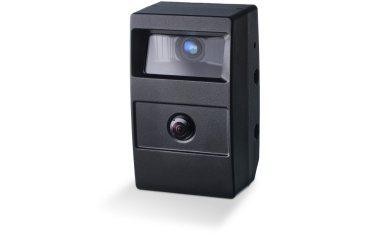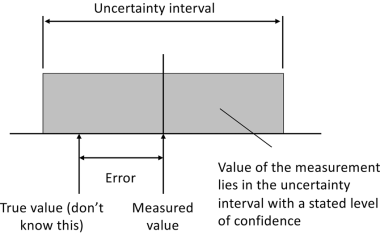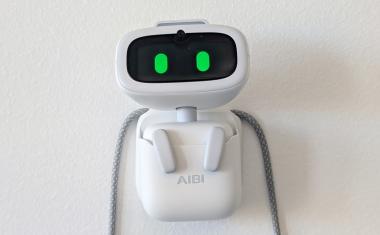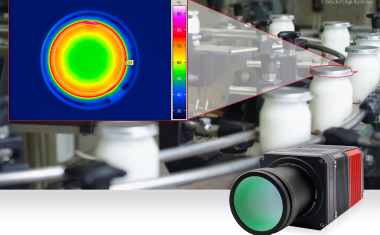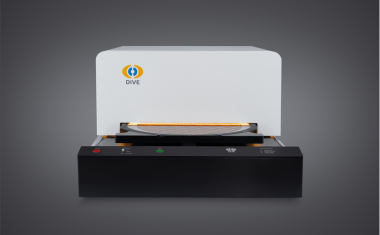Camera with a key function
A testing system is to identify screws on the basis of a 2D code and monitor the pre-tensioning force achieved during assembly. An intelligent camera in the hand-held reading device functions as an embedded system and undertakes all measurement and control functions.
In order to simply identify screws and document the pre-tensioning force achieved during assembly, the measuring technology specialist AMG Intellifast has developed a hand-held reading device, which integrates a bar code reader, a temperature sensor and an ultrasonic measurement transducer into a single testing unit. The compact design was made possible by an intelligent camera from VRmagic, which undertakes the identification and control in the all-in-one testing unit. The software for detecting the directly marked 2D codes on the screw heads was developed by the Mannheim company Neogramm.
The testing system from Intellifast measures the pre-tensioning force of fitted screws by means of the temperature-compensated determination of ultrasound running times. As a reference, the ultrasonic running time in an untensioned state, together with an identification number for the type of screw, as sequential number and information about the required ultrasonic settings are saved in the form of a data matrix code on the screw. On the basis of this information, the system can identify the screw and precisely determine the pre-tensioning force achieved during assembly without any further intervention by the user. A special feature is that the code reader is integrated into a hand-held measuring unit together with a temperature sensor and the ultrasonic measurement transponder. The final product is a mobile and easy-to-use system, which enables complete traceability and complete documentation of the screw and the screwing process.
Measurement at the touch of a button
"By the integration of the ultrasonic measurement transducer, the camera and the PT100 temperature sensor, the precise measurement of the ultrasonic running time can be measured with a single touch of a button". As Frank Scheuch, Manager of AMG-Intellifast, explains the simple use of the mobile testing device. The measuring head is modified by means of an exchangeable adapter according to the size of the screw.
The testing head is equipped with two LEDs. The left hand diode indicates the correct identification of the data matrix code, while the right-hand diode indicates the pre-tensioning force. The LEDs are switched within easily adjustable tolerance limits according to a traffic light principle. For example, a red LED indicates that the pre-tensioning force is too low, a blue LED indicates that the pre-tensioning force is within a freely adjustable tolerance and the pre-tensioning force is correct when the green LED lights up.
Control of external components
The integrated design of the testing head was made possible by the intelligent camera VRmDC-12/BW from VRmagic, which independently undertakes all of the measurement and control tasks. With a weight of about 50 g and external dimensions of 46 x 46 x 54 mm it is both light and compact. It is installed behind a plexiglass window in a dust-proof and water-resistant hand-held measuring device. In addition, the camera is equipped with a parallel-operation DaVinci-Dual-Core chip from Texas Instruments, which integrates a DSp and an ARM9 processor with a standard Debian-Linux operating system in a system-on-a-chip (SoC). A Flash module is used as the memory unit. As standard, the chip contains a RAM, Flash and USB controller, a video input to the sensor, an analog and video output, GPIOs, freely usable pins for digital signals (2 In, 3 Out), IOs for trigger and strobe, up to three serial interfaces, Ethernet and an SPI expansion bus.
Parallel image processing
Neogramm developed the detection software for the identification of the directly marked 2D codes (Datamatrix ECC200) on the hardware platform of the camera. The customised software reliably detects the identification code on metallic surfaces even with low contrast and reflective or dirty surfaces. "The detection software was optimised by means of search algorithms, which initially identify potential code patterns on the screw head", explains Neogramm Manager Kai Blümchen. "The code is only verified in a second step."
To reduce the processing time of the software, Neogramm utilised the advantages of parallel image processing on the dual-core chip of the freely programmable camera. While the Linux operating system of the camera runs on the ARM9 processor of the camera, the DSP can be fully utilised for image processing tasks. Communication between the DSP and the ARM9 as well as the administration of the common intermediate image memory is carried out by the Coded Engine from Texas Instruments. Both processors were programmed in the development environment Visual Studio in C or C++. As the host system and the camera use the same API, the algorithms could easily be transferred to the camera via Cross-Compiler. The detection result is optionally output via the existing USB 2.0 serial interface or via the Ethernet output of the camera and is processed for measuring the screw in the subsequent steps.
Vision 2012 Hall 1D81







